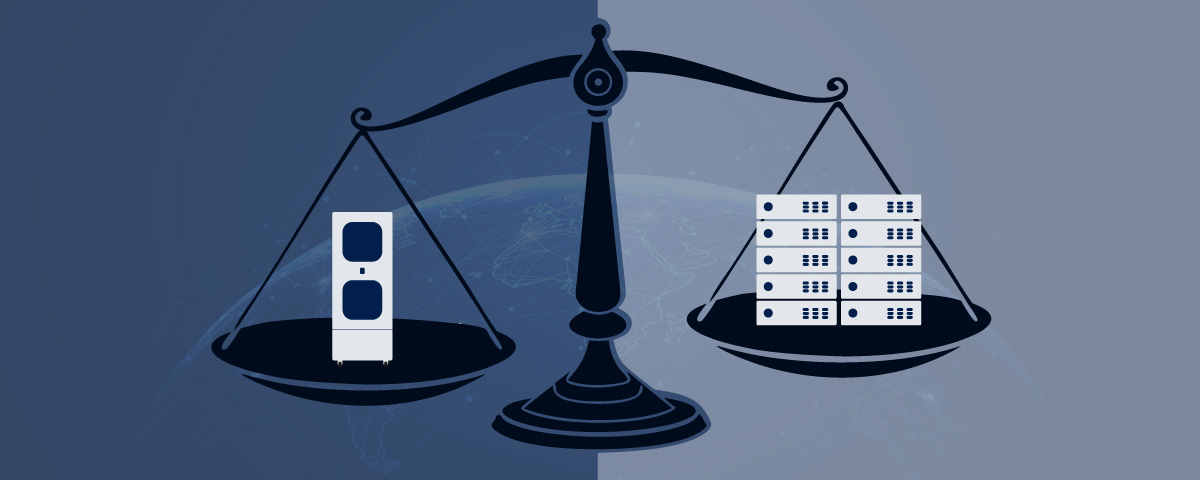Temperature control is a major threat to computer equipment in server rooms with many servers being damaged due to inadequate temperature control. Computing equipment generates a massive amount of heat, and on top of that external temperature rises outside of the room can have a negative impact on temperature management in server rooms. So if the temperature is not kept under control and the room overheats, you will most likely end up with damaged to servers and loss of data stored.
How do you keep your server room cool?
Proper server room temperature management is crucial to protect your servers and equipment from damage. According to the tech experts, the recommended temperature range for a server room is between 18° and 26° Celsius (64.4F and 80.6F), with relative humidity between 45-50%. If the server room exceeds the temperature range your equipment will lose operation causing downtime and depending on how hot it gets it can cause permanent damage to your servers.
Keeping traditional on-premise server rooms cool is complicated, time-consuming and expensive as you’ll need to take many factors into consideration.
Air conditioning air flow – a server room needs its own dedicated intake and return outlets.
Temperature monitoring – you need to have a real-time temperature monitoring system that alerts you if the temperature starts rising.
Layout – the room’s layout will have an effect on the temperature and how easy or hard it will be to maintain the right temperature.
Lack of air conditioning – if you don’t have air conditioning installed, you need to find an alternative, like a portable AC unit (not recommended, but still an option).
Blanking panels – blanking panels will help you manage the temperature but you need to know how to install them properly.
Sealing the room – if the room is properly sealed it will be a lot easier to trap the cool air inside (think windows, doors, gaps, cracks etc.).
Lighting and unnecessary equipment – make sure you remove any unnecessary lights or equipment that may be contributing to the temperature rising.
Cooling made simple
Our Zella Pro micro data centres are fully sealed and self-contained server rooms in a box that massively reduce the area that needs to be cooled down. The Zella Pros have thermal insulation which keeps all equipment cool without the need to control the temperature in the entire room.
The cooling system is located at the base of the Zella Pro, with critical IT infrastructure separated from the cooling system. This allows contractors to service and maintain the cooling system without interfering with critical IT infrastructure.
Unlike traditional server rooms, our Zella Pros have their own cooling system with your cooling and energy efficiencies matched with your IT load at all times making it extremely efficient and inexpensive to cool. The Zella Pros can reduce operational and energy costs by 30-60%.
Check out our online calculator to find out exactly how much money you will be saving by switching from a traditional server room to a Zella Pro or get in touch to find out more.





